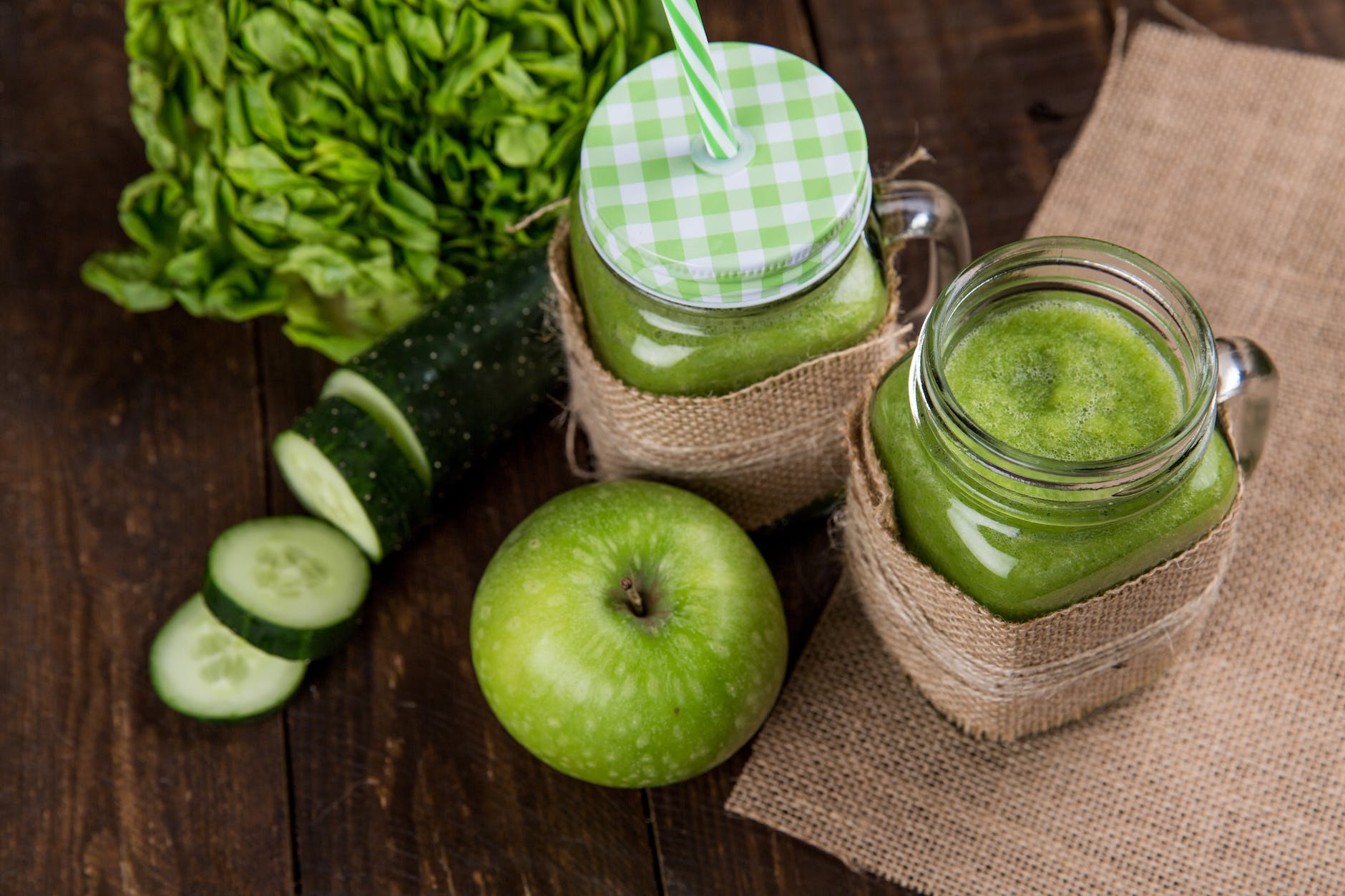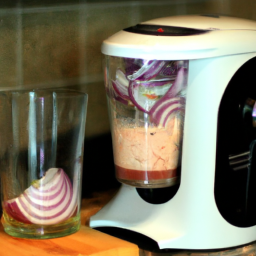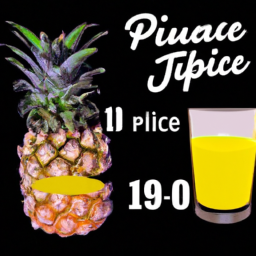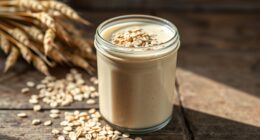Everyone enjoys feeling fantastic and living life to the fullest, without the annoying issue of acid reflux holding us back. Luckily, making small changes to our diet can greatly help in relieving those uncomfortable symptoms. And do you know what’s gaining popularity as a natural remedy? Cold pressed juices! Discover why drinking cold pressed juices can have a significant impact on alleviating acid reflux. Stay tuned, and you might pick up a tip or two that could make a real difference.
Cold Pressed Juices: What Are They? Cold pressing is a process used to extract juice from fruits or vegetables by crushing them with a hydraulic press rather than grinding or shredding them like traditional juicing methods. This means that more enzymes and nutrients remain intact compared to other types of juicing processes – making it an ideal choice for those looking for a nutritious way to get relief from their acid reflux symptoms.
Why Choose Cold Pressed Juices For Acid Reflux? Consuming cold-pressed juices can help keep your body hydrated and your digestion running smoothly, which reduces the likelihood of experiencing uncomfortable symptoms related to acid reflux. Additionally, certain plant compounds found in cold-pressed juices have anti-inflammatory properties that may reduce irritation in the stomach lining and esophagus caused by excessive stomach acids – further helping relieve acid reflux pain and discomfort.
Imagine the feeling of having a burning sensation in your chest, and an acidic taste in your mouth. This is what people with acid reflux experience as it occurs when stomach acids back up into the esophagus. Acid reflux, also known as gastroesophageal reflux disease (GERD), is a common disorder that affects millions of people worldwide. It is characterized by heartburn symptoms such as pain or discomfort in the chest area, belching, bad breath, burping, and regurgitation. Other gastrointestinal reflux symptoms include nausea and vomiting.
It’s important to understand how GERD works so that you can recognize the signs and prevent further complications. When we swallow food or beverage, our body produces digestive juices which travel down through the esophagus before reaching the stomach where they are neutralized by other gastric juices. In cases of acid reflux however, these digestive fluids overflow from their normal route and travel backward into the esophagus causing irritation. To make matters worse, this process weakens the lower esophageal sphincter (LES) – a muscle at the base of your esophagus that helps keep contents inside your stomach until digestion is complete.
Luckily there are many measures you can take to reduce symptoms associated with acid reflux including lifestyle modifications like avoiding trigger foods or drinks, quitting smoking if applicable and sleeping upright after meals instead of lying flat on one’s back. Next we’ll discuss how cold-pressed juice may benefit those suffering from GERD symptoms.
Benefits Of Cold-Pressed Juice For Acid Reflux
It is no secret that cold-pressed juices can be incredibly beneficial for those suffering from acid reflux. Cold-pressed juice, which retains the most vitamins and minerals when compared to other types of juicing, helps reduce symptoms associated with gastroesophageal reflux disease (GERD). The natural enzymes present in fresh fruits and vegetables help break down food as it moves through our digestive system, relieving strain on the lower esophageal sphincter (LES) while also reducing inflammation associated with GERD. In addition, cold-pressed juices are packed with antioxidants that help protect against cell damage and provide additional relief to sufferers of acid reflux.
Making a change in your diet by incorporating cold-pressed juices into your daily routine can have an immediate impact on those dealing with heartburn or indigestion. It is important to note that these recipes should not replace meals but rather supplement them – this will ensure you get all the necessary nutrients without overloading your stomach with acidic foods. Furthermore, try adding some ginger or aloe vera juice to increase their healing properties. Finally, always opt for organic produce whenever possible since non-organic items may contain harmful pesticides or chemicals.
By taking advantage of the amazing benefits of cold-pressed juices, those struggling with acid reflux can find considerable relief from their uncomfortable symptoms. With just a few simple ingredients and a blender or juicer at hand, anyone can create delicious and nutritious beverages tailored specifically to their needs!
Types Of Cold-Pressed Juices To Try
When it comes to relieving acid reflux, cold pressed juices are a great option. Juices made with fresh fruits and vegetables can help reduce inflammation of the esophagus as well as provide essential nutrients for good digestion. Here are some of the best cold-pressed juices to try:
Apple-cucumber juice is an excellent choice for reducing symptoms associated with acid reflux. The combination of apples and cucumbers contains beneficial enzymes that aid in digestion and reduce irritation in the stomach lining. Additionally, this juice helps flush toxins from your system while providing hydration and antioxidants.
Pineapple-celery juice has anti-inflammatory properties which may help alleviate acid reflux symptoms. Celery also contains potassium, a mineral that promotes healthy digestive function. This unique blend provides vitamins A, C, and K along with other important minerals such as calcium and magnesium.
Carrot-ginger juice is one of the most popular varieties of cold-pressed juices due to its ability to soothe gastrointestinal issues like indigestion or heartburn caused by acid reflux. Carrots contain beta carotene, an antioxidant that aids in digestion while ginger offers calming effects on the stomach muscles helping them relax after eating.
Beet-apple juice is another refreshing mix that helps reduce inflammation throughout the body including the esophagus lining. Beets contain vitamin C which boosts immunity and apple adds fiber to help move food through your intestines more easily without causing discomfort or bloating.
Orange-spinach juice is packed full of Vitamin E which helps protect cells from damage caused by free radicals, making it ideal for those suffering from chronic acid reflux. Spinach is high in iron, calcium, and folic acid promoting overall health benefits along with improved digestion when combined with oranges which are rich in Vitamin C aiding absorption of nutrients into our bloodstreams faster than ever before!
So these are just a few examples of cold pressed juices you can enjoy if you suffer from Acid Reflux – all offering nutrition plus relief! With their natural ingredients they make delicious drinks perfect for giving yourself a boost each day!
Preparing Cold-Pressed Juices At Home
Preparing cold-pressed juices at home can be a great way to enjoy the health benefits of fresh juice without having to buy it from an outside source. To make your own homemade cold-pressed juice, you’ll need a cold-press juicer and some basic ingredients. You can find recipes online or in cookbooks that feature popular combinations of fruits and vegetables for making healthy drinks. It’s important to note that when selecting ingredients, safety should always be your top priority – avoid using any produce that has gone bad or is past its expiration date.
When preparing your homemade cold-pressed juice, start by washing all of the produce thoroughly before adding it into the juicer. Make sure you cut off any damaged areas as these are likely to contain bacteria that could lead to food poisoning if consumed. After everything is chopped up, add them into the juicer one ingredient at a time so they blend properly. Once finished, pour the mixture into a glass jar or cup and store in the refrigerator for up to two days for optimal taste and nutrition.
For those with acid reflux, there are special considerations when preparing cold-pressed juices at home such as avoiding citrus fruits and tomatoes due to their higher levels of acidity which can aggravate symptoms of GERD (Gastroesophageal Reflux Disease). Additionally, leafy green vegetables like spinach and kale may also cause digestive issues and should only be used sparingly in homemade juices. Instead, focus on other healthier options such as carrots, apples, celery stalks, cucumbers, ginger root strips and watermelon chunks which are more suitable for people with sensitive stomachs.
Special Considerations For People With Acid Reflux
For those suffering from acid reflux, it is important to understand the dietary guidelines and symptom management that can help relieve their condition. Reflux-specific diets have been developed to address the various treatment options available for people with gastroesophageal reflux. These diets focus on reducing symptoms by avoiding foods that are known to cause heartburn or other issues related to acid reflux.
Foods such as tomatoes, peppers, onions, garlic, chocolate and carbonated beverages should be avoided in order to reduce irritation of the esophagus and stomach lining. Additionally, it is important to eat smaller meals more frequently throughout the day rather than three large meals a day. Eating too much at one time will put extra pressure on your digestive system which can lead to discomfort and indigestion.
Finally, cold pressed juices can provide an effective way for people with acid reflux to receive essential nutrients without exacerbating their symptoms. Cold pressed juices often contain fewer acids than traditional fruit juices due to their unique production process; this makes them beneficial for individuals looking for relief from frequent episodes of acid reflux. As we move forward into the next section about nutrition and ingredients in cold-pressed juice, it’s clear there are many benefits associated with this type of drink when dealing with acid reflux.
Nutrition And Ingredients In Cold-Pressed Juice
When it comes to nutrition and ingredients in cold-pressed juice, the possibilities are endless. With a variety of fruits, vegetables, herbs and spices, one can create delicious concoctions with plenty of health benefits. Not only do these juices provide essential vitamins and minerals but they also have anti-inflammatory properties that can help reduce acid reflux symptoms. Whether you’re looking for an energizing beverage or something to soothe your stomach ache, there is sure to be a cold-pressed juice recipe out there that fits your needs.
Making your own cold-pressed juice at home allows you to tailor the flavor and nutrient content based on individual preferences. You might choose to include apples for their high antioxidant content or spinach for its iron content. Adding ginger, turmeric or cayenne pepper can also increase digestive power, helping relieve acid reflux symptoms as well as other gastrointestinal issues like bloating and gas. There are even recipes specifically designed for sufferers of acid reflux that use ingredients known to alleviate heartburn such as cucumber and aloe vera juice.
The great thing about making your own cold-pressed juices is that you always know exactly what you’re putting into them—no added sugars or preservatives! Plus, creating unique combinations lets you get creative with flavors while still providing relief from acid reflux symptoms. So go ahead: experiment with different fruits and vegetables; try adding some herbs or spices; make up your own special recipe tailored just for your taste buds and body’s needs!
Safety Concerns With Cold-Pressed Juices
As we discussed previously, cold-pressed juices offer a variety of health benefits due to their nutrient density. However, it is important to be aware of potential safety concerns with consuming these types of juices. As with any type of food or beverage, there are certain precautions to take when considering incorporating cold-pressed juice into your diet for relief from acid reflux.
The most common concern with consuming cold-pressed juices is that they may contain bacteria and other microorganisms, which can cause foodborne illnesses if not properly handled and stored. Additionally, some ingredients used in making cold-pressed juices such as garlic, ginger and citrus fruits can irritate the digestive system and exacerbate symptoms associated with acid reflux. Therefore, it is important to take caution when preparing and consuming these kinds of juices. It is also recommended that individuals consult with their doctor before adding any new foods or beverages to their diet.
In addition to safety concerns related to consumption, there are also risks associated with the production process itself. Cold-pressing involves high pressure processing (HPP) technology which has been linked to several cases of bacterial contamination in recent years. In order to ensure the safest product possible, consumers should always look for products made using HPP certified equipment by companies committed to following good manufacturing practices (GMP).
Now that you understand the potential safety issues associated with cold-pressed juices let’s move on to discussing how combining diet and exercise can help manage acid reflux symptoms effectively.
Combining Diet And Exercise To Manage Acid Reflux
Managing acid reflux is like a juggling act—balancing dietary changes and an exercise routine can be challenging, but it’s essential for long-term relief. As a nutritionist or dietitian, I recommend that people with gastroesophageal reflux (GERD) make some key dietary changes to help manage their symptoms. These include avoiding fried foods and acidic beverages such as coffee, alcohol, citrus juices, and tomato-based products; eating small meals throughout the day; not lying down immediately after eating; staying upright for at least two hours after eating; and quitting smoking if needed.
In addition to making these important dietary modifications, incorporating regular physical activity into your daily life is also beneficial in managing acid reflux. Not only does exercising regularly reduce stress levels which can worsen GERD symptoms, but it also helps you maintain a healthy weight — being overweight increases the risk of developing GERD. So while there isn’t one specific exercise routine that works best for everyone who suffers from this condition, brisk walking, yoga and swimming are all good choices when it comes to finding something that fits your lifestyle.
By combining both diet and exercise into your overall acid reflux management plan, you’ll be able to better control your symptoms over time and experience fewer flare ups—giving you more energy and freedom to live the life you desire!
Alternative Treatments For Acid Reflux
Alternative treatments for acid reflux are gaining traction with those looking to find natural remedies that can help relieve symptoms. Cold pressed juices, specifically vegetable-based options like celery juice, can be an effective tool in managing and preventing acid reflux. Celery is high in minerals, antioxidants, and contains a compound known as butylphthalide which helps reduce inflammation associated with GERD. Additionally, ginger tea has been found to have similar anti-inflammatory properties and may aid in digestion when consumed after meals.
Yoga poses such as the cat/cow pose or cobra stretch can also increase mobility of the digestive system by helping stimulate digestion through massaging the abdominal organs. Other lifestyle modifications include taking probiotic supplements; this additional support for gut flora may improve your overall health and ultimately prevent future episodes of acid reflux flare ups. Finally, it is essential to identify trigger foods or drinks that worsen one’s individual case of acid reflux and eliminate them from your diet completely.
Ultimately, there are many changes you can make to manage your particular case of acid reflux without relying solely on medications or other medical interventions. The best approach is to consult with a healthcare professional who specializes in nutrition if you feel overwhelmed by how to begin making these changes yourself.
When To See A Doctor About Acid Reflux
According to the American College of Gastroenterology, around 60 million Americans report experiencing acid reflux symptoms at least once a month. When these symptoms become chronic and frequent, it’s time to visit your doctor.
There are various signs that may indicate you should seek medical advice for acid reflux. Shortness of breath, wheezing or persistent coughing after eating can be an indication of GERD (Gastroesophageal Reflux Disease). Difficulty swallowing food or liquid accompanied by chest pain could also mean severe heartburn associated with acidic contents entering the esophagus. If you experience any of these symptoms regularly, schedule a doctor’s appointment as soon as possible.
Your primary care physician will evaluate your condition and make recommendations on how to best manage it. This may include lifestyle changes such as dietary modifications, avoiding certain foods that trigger your symptoms, exercising regularly, maintaining ideal body weight and quitting smoking if necessary. Your doctor might also suggest medications like antacids or proton pump inhibitors to reduce stomach acid production which helps alleviate some of the more uncomfortable symptoms caused by acid reflux. Visiting your healthcare provider is important in order to properly diagnose and treat this condition so it doesn’t lead to further complications down the road.
In addition to cold pressed juices providing relief from mild cases of acid reflux, getting checked out by a professional is essential in managing more serious levels of discomfort associated with GERD. Doctors visits help ensure we get proper diagnosis and treatments needed for optimal health outcomes.
Frequently Asked Questions
How Often Should I Drink Cold-Pressed Juices To Relieve Acid Reflux?
When it comes to relieving acid reflux, cold-pressed juices can make a world of difference. If you’re looking for natural remedies that are easy and effective, the best thing you can do is start incorporating cold-pressed juice into your daily routine. But how often should you drink these juices? Let’s take a look at what ingredients work best and how frequently they should be consumed.
Cold pressed juices contain an array of beneficial nutrients such as vitamins A, C and K, minerals like calcium and magnesium, enzymes, antioxidants and many other phytonutrients. These nutrients have anti-inflammatory properties which help reduce symptoms associated with acid reflux like heartburn or nausea.
When selecting the right ingredients for making your own cold-pressed juice, it’s important to choose fresh fruits and vegetables that are organically grown in order to get the most out of their nutritional benefits. For example dark leafy greens like spinach or kale provide high levels of folate while citrus fruits like oranges or lemons offer lots of vitamin C – both great options when trying to relieve acid reflux.
In terms of frequency, pregnant women and nursing mothers should limit themselves to just one glass per day due to possible risks from consuming too much sugar from certain fruits. Otherwise everyone else can enjoy up to two glasses per day depending on individual needs but always consult your doctor first if unsure about any dietary changes! Cold Pressed Juices are an excellent way to nourish your body with natural remedies so why not give them a try today?
Is Cold-Pressed Juice More Effective Than Store-Bought Juice For Relieving Acid Reflux?
When it comes to relieving acid reflux, many people turn to cold-pressed juice. But is this type of juice more effective than store-bought juices? As a nutritionist or dietitian, I believe the answer lies in understanding what makes cold-pressed and store-bought juices different.
Cold-pressed juice is made by grinding fruits and vegetables into a paste, then pressing them through an auger which extracts their liquid content. This process preserves most of the nutrients that would otherwise be lost during traditional juicing methods used for making store-bought juices.
Cold-pressed juices also contain significantly less sugar and fewer calories than store-bought versions, which can help reduce symptoms associated with acid reflux such as heartburn and nausea.
On the other hand, store bought juices are typically heated at high temperatures during production which destroys some of their beneficial enzymes and vitamins.
Furthermore, these types of juices tend to include added sugars and preservatives which may exacerbate digestive issues related to acid reflux. For those looking for relief from this condition, it’s best to avoid these ingredients altogether when possible.
Overall, cold-pressed juice appears to be better suited for individuals suffering from acid reflux because it helps maintain essential nutrients while avoiding unhealthy additives found in store bought varieties.
To get maximum benefits from drinking cold-pressed juices for relief from acid reflux however, they should only be consumed as part of a balanced diet alongside other fresh foods rich in fiber and vital nutrients like proteins and antioxidants.
Are Cold-Pressed Juices Safe For People Who Are Pregnant Or Nursing?
Do you have a loved one who is pregnant or nursing and wondering if cold-pressed juices are safe for them? It’s natural to worry about the health of your family, especially when it comes to acid reflux.
When it comes to nutrition choices during pregnancy and breastfeeding, cold-pressed juice can be an excellent source of vitamins and minerals that may help relieve some symptoms of acid reflux. Here are 4 key benefits of drinking cold-pressed juice:
- Cold-pressed juices contain fewer preservatives than store-bought juice, making them less likely to cause digestive issues like acid reflux.
- The nutrients in cold-pressed juice are easily absorbed into the body due to its high bioavailability, so more vitamins and minerals reach their targeted areas quickly.
- The lack of added sugar makes them low in calories compared to sugary drinks which can trigger GERD flareups.
- They offer a wide range of flavors and combinations for those looking for something different from traditional OTC medications or supplements.
As a dietitian, I recommend having conversations with both your doctor and a qualified nutritionist before adding any new food item into your diet – particularly when pregnant or nursing. That being said, if the necessary precautions are taken then incorporating chilled pressed juicing into your routine could potentially benefit those suffering from acid reflux!
Are There Any Other Natural Remedies I Can Use In Addition To Cold-Pressed Juices For Acid Reflux?
Cold-pressed juices are a great option if you’re looking for natural relief from acid reflux. But what other remedies can be used in addition to these? Fortunately, there are many additional natural remedies that can provide effective relief from the symptoms of acid reflux.
One such remedy is making dietary changes and eating smaller meals more frequently throughout the day. Eating fewer fatty foods and avoiding spicy meals can also help reduce reflux episodes. Additionally, certain herbs like ginger have been found to be beneficial for people with stomach issues. Lying down after eating could also help by keeping food away from the esophagus.
Finally, lifestyle adjustments such as reducing stress levels or quitting smoking may also go a long way towards relieving acid reflex symptoms. Some experts recommend doing yoga or meditation exercises each day too. If needed, your doctor might even prescribe anti-inflammatory medications to alleviate discomfort caused by acid reflux.
In summary, while cold pressed juices definitely make an excellent choice when it comes to finding natural relief from acid reflux, there are plenty of other options available as well including dietary changes, herbal supplements, lifestyle modifications and anti-inflammatory drugs. So if one solution doesn’t work for you don’t hesitate to explore alternative solutions until you find something that works best for your needs and preferences!
What Are The Best Ingredients To Include In Cold-Pressed Juices For Acid Reflux?
Are you wondering what the best ingredients are to include in cold-pressed juices for acid reflux? If so, then this article is for you. As a nutritionist or dietitian, I believe that adding certain natural ingredients can be beneficial when trying to reduce symptoms of acid reflux.
When making your own cold-pressed juice blend at home it’s important to choose ingredients that will help support digestion and decrease inflammation. Some of my favorite recommendations include apple, cucumber, ginger, turmeric, and aloe vera.
Apple contains pectin which helps slow down the digestive process, while cucumbers have anti-inflammatory properties that aid in reducing stomach acidity. Ginger root has been known to suppress nausea as well as provide relief from heartburn and indigestion.
Turmeric has considerable antioxidant content, which can also help protect against irritation in the gastrointestinal tract. Finally, aloe vera juice is an excellent choice thanks to its soothing effects on the stomach lining due to its high mucilage content.
These five ingredients make up an effective combination when blended together into a cold-pressed juice drink for those suffering from acid reflux issues. It’s important, however not to overdo it with these types of drinks since too much intake could lead to other problems, such as excessive bloating or gas.
To ensure maximum benefits, try drinking one glass daily before meals or snacks if needed and don’t forget about eating fiber-rich foods like fruits and vegetables along with plenty of water throughout the day!
With the right approach and natural remedies such as these, you should quickly find relief from your acid reflux!
Conclusion
As a nutritionist, I believe that cold-pressed juices can be an effective and natural way to relieve the symptoms of acid reflux. Drinking one or two glasses per day can help soothe your esophagus and reduce the burning sensation you may experience after eating. Not only are these drinks full of vitamins and minerals, but they also provide your body with essential enzymes that aid in digestion.
When selecting ingredients for your cold-pressed juice, it’s important to choose ones that will naturally assist in relieving acid reflux. Ingredients like cucumber, celery, ginger, apples, turmeric, aloe vera juice, lemon juice and honey all have anti-inflammatory properties which can help ease digestive discomfort. When blended together correctly into a smooth drinkable form, these ingredients become even more powerful!
Overall, adding cold-pressed juices to your daily routine is a great way to support healthier digestion and improve overall wellbeing. With its delicious taste and easy preparation method, this natural remedy is sure to make you feel better quickly – no matter what stage of life you’re currently in!
Hi, I’m Alexander. I’m a vegan of over 20 years, and I initially made the switch for health reasons. However, as time went on, I became more and more passionate about the ethical and environmental implications of leading a vegan lifestyle.
I am the author of The Graceful Kitchen, a vegan blog where I share recipes for delicious and nutritious vegan meals. As someone who is deeply committed to living a cruelty-free life, I am also a strong advocate for using whole foods as the foundation of a healthy diet – and believe that going vegan is one of the best ways to achieve this.










